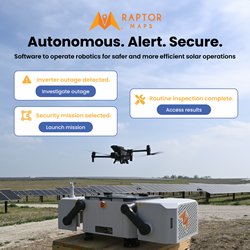Responding to EU's double reverse policy, Chinese PV manufacturers aggressively invest in the solar
According to TrendForce, Chinese PV first-tier manufacturers have come to Taiwan not only to exchange marketing ideas but also to resolve concerns and maintain their existiing relationship with related industries.
According to EnergyTrend, a research division of TrendForce, Chinese PV manufacturers are greatly interested in cooperating with Taiwanese manufacturers. Recently, first-tier manufacturers have come to Taiwan not only to exchange marketing ideas but also to resolve concerns and maintain their existing relationship with related industries.
PV manufacturers believe that it is possible for the double reverse policy to affect the market, but the level of taxes and policy coverage are the major concerns among the industries. EnergyTrend indicated that despite the slow market development, PV demands in the European market still accounted for approximately 30% of the global market. On the other hand, if the punitive tariff is less than 30%, Chinese products may still thrive in the European market by adjusting product price. Moreover, in the value added chain, the division of work is becoming more evident among Taiwanese and Chinese manufacturers. In other words, as the penetration rate of Chinese manufacturers continues to increase, Taiwanese manufacturers will become more important in the global market.
Recent orders received by Taiwanese manufacturers are mostly from China and Japan; to several Taiwanese manufacturers, orders from China even accounted for approximately 50% of their overall production. Related industries indicated that their recent orders are overly dependent on Chinese manufacturers; if operational issues occur and Chinese manufacturers withdraw orders, the capacity of Taiwanese manufacturers would be greatly reduced. In other words, orders from China could enhance the capacity and interest rate of Taiwanese manufacturers, but business risk may also be greater.
Product regionalization is more evident in the spot market. In the Chinese market, polysilicon price is still quoted between 130RMB/kg-150RMB/kg, but traded price has started to drop slightly due to the policy; Multi c-Si wafer price is between 5.8RMB/piece-6.2RMB/piece; Mono c-Si wafer price is between 7.8RMB/piece-8.3RMB/piece; cell price remained flat.
As for USD quotes, polysilicon spot price has slightly increased up to 17.95USD/kg, showing a 0.2% increase; Multi c-Si wafer price was negotiated in April, this week's average price stayed flat; Mono c-Si wafer price increased by 0.08% to 1.221USD/piece. On the other hand, cell price continued to increase in April due to sufficient orders, with this week's average price at 0.389USD/Watt, a 0.78% increase. In addition, since subsidy has been adjusted downwards by 10% in the Japanese market, the number of orders may decrease in the future, thus this week's module price remained flat.
Featured Product

